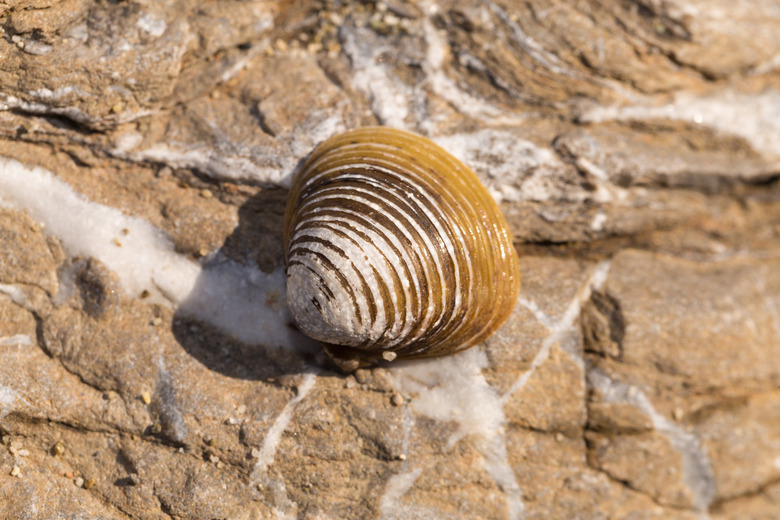The Differences Between Clams & Scallops
Clams and scallops are bivalves, a class of mollusks. This form of life first appeared in the late Cambrian Period, about 400 million years ago. Bivalves have two shells, hinged at one end, which can be closed tightly when under attack or out of water. They get nourishment by filtering tiny organisms and other digestible items from water. Some are mobile only early in life, attaching themselves to rocks or another shell and remaining attached through the rest of the life cycle, some burrow and "walk" around on the bottom, and some can swim.
Clam and Scallop Similarities
Clam and Scallop Similarities
The word bivalve refers to the two shell halves, or valves, that make up both the clam and the scallop. The valves join at the top, at the umbo. The umbo, located at the hinge area, is the oldest part of the shell, and the bivalve grows from that point outward. Adductor muscles on each side hold the shell closed. When the clam or scallop relaxes the adductor muscles, ligaments located on each side of the umbo can then pull the shell open.
Clams and scallops are filter feeders, meaning that water and food particles get sucked in through one set of siphon gills, then expelled through a second set. In between, small hair-like protrusions called cilia move the water, and food is caught in a mucus membrane. The food and mucus mixture is then transported to the mouth. The gills also extract oxygen from the water.
Clam Differences
Clam Differences
The clam has a foot, which is used to dig down into the sand where it can burrow. The foot can also be used to push the clam along in the sand, or used as an anchor to keep it in place.
Scallop Differences
Scallop Differences
The scallop does not have a foot and does not burrow in the sand. Scallops lie on the sea or bay bottom and move by using the adductor muscle to open and close their valves, thereby pushing water out of the shell from around the hinge and achieving locomotion. The scallop also has a set of blue eyes that can, though weak, see movement close by and take evasive action from predators.
Clams and Scallops as Food
Clams and Scallops as Food
While everything inside the shells of both clams and scallops can be eaten, the adductor muscle is the part that people most enjoy eating. Because the scallop uses this muscle to swim, the adductor in the scallop, also called the "eye," grows much larger than that of the clam.
References
Cite This Article
MLA
Wylen, Bert. "The Differences Between Clams & Scallops" sciencing.com, https://www.sciencing.com/difference-between-clam-scallop-7787010/. 13 March 2018.
APA
Wylen, Bert. (2018, March 13). The Differences Between Clams & Scallops. sciencing.com. Retrieved from https://www.sciencing.com/difference-between-clam-scallop-7787010/
Chicago
Wylen, Bert. The Differences Between Clams & Scallops last modified March 24, 2022. https://www.sciencing.com/difference-between-clam-scallop-7787010/
